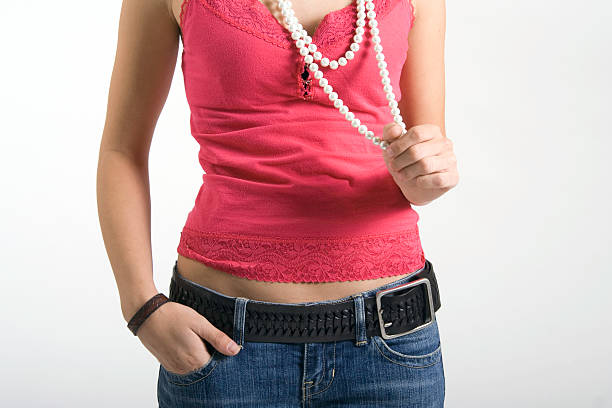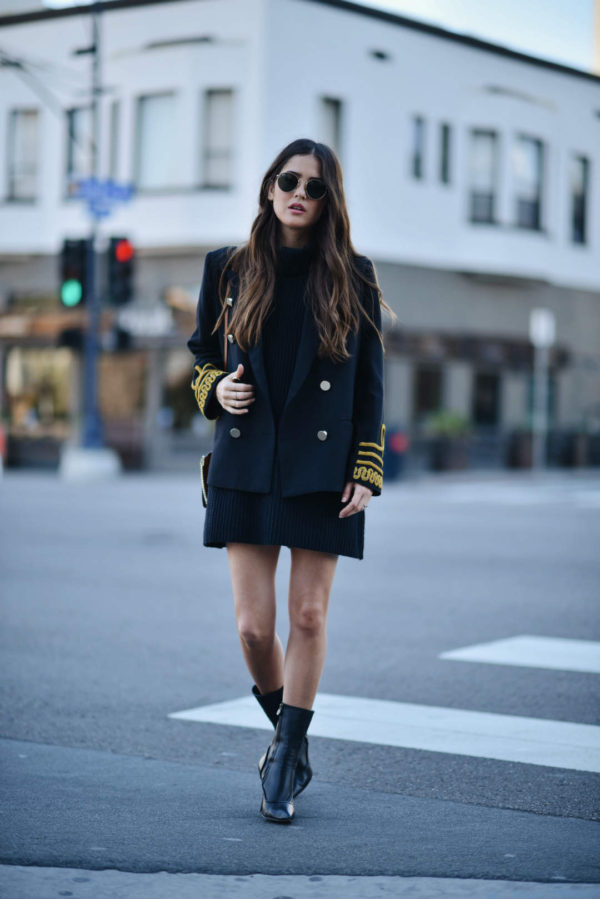A friend of mine bet me she would never wear low-rise jeans again. The rumor was that Bella Hadid, the runways of fashion shows and remarkable young people living in downtown Manhattan were wearing the most despised clothing from the mid-aughts.
I also set a phone reminder that she would be wearing low-rise pants in 2025 without really intending it. Not because I love this look but because I went through high school and middle school in the 2000s. I share all the fashion-related traumas. This is because fashion trends work this way: At first, a new style is met with fear and disdain, and it’s seen as something that only the young or professionally beautiful should wear. It becomes more mainstream and less threatening so that people who aren’t as conscious about what they wear on their bodies will buy it in the store. ).
No one should wear clothing they dislike because others think it’s cool. The most stylish thing you can as a person to do is to find a style and lifestyle that suits you. If you stick with it for a long time, you will be on trend several times. Wear what you like because no one cares.
It’s a fact that low-rise jeans have become cool again. Women are going crazy.
People forget how much they hated the things they now love. The 2010s brought demure minimalism and rejected the joyously sleazy days of exposed hipbones and Juicy Couture tracks. A beige sack was the most fashionable thing until a few years ago.
High-rise jeans are great for those who like to feel sucked into their clothing. They come with a girdle of stretchy, thick denim pressed against the stomach and sit at or above our natural waist. In the 2010s, those who enjoyed being squeezed and sucked into their clothing were in heaven. Although only sometimes comfortable per se, these pants provided a unique level of comfort for people who previously had a hard time wearing pants. Rachel Syme wrote in a 2019 ode about high-waisted trousers that “low-rise pants are walking billboards for extreme thinness, androgynous frames.” But high-rise styles conform to all body shapes and sizes. Not only do they highlight hips and butts, but they also demand them.
Many women have found that the mainstreaming of high waists has made them feel better. They no longer want to be at risk of exposing their ass. Many Instagram and TikTok posts show the superiority of high-waisted pants, which hold in the stomach, and emphasize the smallest part. They show side-by-side photos — one that offers an hourglass figure in a pair of high-rise leggings and another.
In the past, clothing and cultural discourse have been intertwined. When we discuss low-rise denim, we are talking about much more than just pants. In the TikTok world, it’s a common trend to mention that in the 2000s, “women were the fashion and not the clothes.” (To the extent this has changed today is debatable, but at least it’s considered rude to publicly mock a woman’s appearance Remember any red carpet images from the 90s to late aughts when jeans were at the lowest point, and crop tops looked more like bralettes. Items for which a flatter stomach was often an unspoken necessity. Simpson and almost all tabloid stars were punished for not fitting the ideal body shape.
Social media and the relative democratization of cultural influence are credited for spreading the idea that it is terrible for women to hate their bodies. The internet allowed groups of curvy and fat women to connect, exchange stories, give styling tips, and begin the seeds of the vast swath of social media dedicated to “body positive.”
It’s not entirely surprising that women in their 20s, 30s, and beyond have been fearful for years about the possibility of low-rise denim and its culture returning to our lives. If you were above a size two, you were fat. The millennial women have learned this through their formative years as children and teens… and they see the trend return, which is a trigger,” says one TikToker, in a video with more than 350,000 likes.
In a report about fatphobia and Y2K style, reporter Kelsey Weekman explained, “Not only is it hard for those above a size 2 to get these trends, but they are often seen as lazy or disheveled when others try them on.” In the culture at large, low-rise jeans could return to fashion. She writes, “Women fought for generations before us to be able to wear pants.” She writes, “Now, we must ensure that these pants do not make us feel starving or punish us for having a big lunch. They should be able to be worn by everyone.”
Here is the problem: It’s already too late. Three years ago, the fashion journalist Sarah Spellings made a prediction in the passive week between Christmas and New Year’s. She’d spoken to professional trend forecasters, to designers at mainstream brands like Levi’s, and smaller luxury labels like Linder, and determined that in the year 2020, low-rise jeans would start to come back in a big way. “The Countdown to Low-Rise Jeans Has Begun,” declared the Cut’s ominous headline.
Spellings says to me, “Everyone hated that.” The writing on the walls has become more apparent in the years since Spellings’ prediction. Depop is a popular online app for secondhand clothing that caters to teens. The most popular items are vintage 2000, including satin bustiers, low-rise cargo trousers, tiny baguette handbags, halter tops, and baby T-shirts. Tom Ford, Dion Lee, and Kith have all played with ironic throwbacks from the 2000s. Hundreds of TikTok users have flocked to accounts showing off their thrift Y2K looks. This has inspired viewers to try their DIY outfits.
This feud is not to be confused with the one in which millennials make cringey videos about teenagers coming to take away their right to wear This feud should not be confused with the one where millennials create cringe-worthy videos about teenagers coming in to take away their rights to wear skinny jeans.
Ironically, the discussion around skinny jeans is similar to the current discourse about low-rise trousers. Spellings remembers reading in fashion magazines that skinny jeans were “not flattering on anyone” and “should not be worn at all costs.” This was only a few short years before they became a de facto denim style. Who could forget the decade-long moral panic about whether leggings covered a woman’s bottom? This debate is even more ridiculous in an age when most people wear athleisure.
Spellings, who does not plan to wear low-rise jeans shortly, has the perspective of a professional. She explains that “people always want to change fashion.” The vitriol directed at low-rise jeans may have made them more attractive to younger people, and they’ve been pushed further into the spotlight. As a teenager, I did not want to wear my mother’s clothes. It’s in our nature to rebel and to try something new.
The return of the Y2K style is primarily due to generational differences — if you’re too young to remember the 2000s, then it’s easier to romanticize. But it’s not like everyone born after 1996 has suddenly become enamored with low-rise denim. Nicole Nunez, 22, a Manhattan College student who created a TikTok to explain the hatred against the style, says the line is more about body shape. Interestingly, my thinner friends support this style most, while my curvier friends are very opposed. “I think this is a fashion trend that I’ll let go of,” she says.
I’ve seen a similar pattern emerge in my life. Since I am approaching 30 years old, only some of my close friends want to revisit the fashion trends from middle school. We’ve already experienced them, and also we are more extensive and curvier now and still remember how vital the Y2K style was for thinness. As I scroll through #lowrisejeans on TikTok’s hashtag, almost all teens are thin and use crop tops to highlight their flat stomachs.



